Vallisneria contortionist
Scientific name: Vallisneria contortionist
Family: Hydrocharitaceae
Usual maximum size in aquariums: 40 - 60 cm (15.75 - 23.62 inch)
014
Recommended pH range for the species: 6.5 - 8
Recommended water hardness (dGH): 4 - 18°N (71.43 - 321.43ppm)
0°C 32°F30°C 86°F
Recommended temperature: 20 - 26 °C (68 - 78.8°F)
Reproduction of the plant: Runners
Origin (in the wild): South Asia
How fast these plants grow: Fast
Recommended substrate: Fine gravel
Demands on lighting: Medium
Ideal placement in a fish tank: Background
Family
Hydrocharitaceae
Common Name
Contortionist Eelgrass
Propagation
Vallisneria contortionist reproduces through runners that grow beneath the substrate, producing new plantlets that gradually form their own root systems. These plantlets can either remain connected to the mother plant or be carefully separated and transplanted to other areas of the aquarium to establish new growth. This vegetative propagation is a highly efficient way for the plant to spread, creating dense clusters over time. To prevent crown rot, it's essential to ensure that the crown - the area where the leaves meet the roots - remains above the substrate. The crown is easily identifiable due to its lighter color compared to the rest of the plant. This propagation method is ideal for aquarists looking to quickly create lush, natural-looking environments.
Difficulty
Easy. Vallisneria contortionist is highly resilient and requires minimal care, making it an excellent choice for beginner and experienced aquarists alike. It adapts well to various water parameters and grows quickly with medium lighting, making it a low-maintenance yet visually striking addition to aquariums.
Short Description
Native to South Asia, Vallisneria contortionist, commonly referred to as Contortionist Eelgrass, is a fast-growing aquatic plant that reaches heights of up to 60 cm (23.62 inches). Its defining feature is its curled, ribbon-like leaves, which give the plant a dynamic appearance, making it a popular choice for aquascaping. The twisted leaves provide a soft, flowing effect, ideal for adding height and texture to the background of the aquarium. Unlike many other species of Vallisneria, this plant does not require bright light to thrive. It performs well under medium lighting conditions, which makes it suitable for low-maintenance tanks. However, care should be taken to avoid damaging the leaves, as they are delicate and prone to dying off if fractured. Despite this, Vallisneria contortionist is hardy, and with regular pruning using sharp scissors, the plant can be kept in excellent health. Removing dying leaves at the base also helps maintain its overall vitality.
Maintenance and Care
Vallisneria contortionist thrives in a wide range of water conditions. It prefers a pH range of 6.5 to 8 and tolerates water hardness between 4 - 18°N (71.43 - 321.43 ppm). The ideal temperature for optimal growth is between 20 - 26°C (68 - 78.8°F). This plant grows quickly in fine gravel substrates and requires minimal fertilization, adapting well to various water conditions. The rapid growth of Vallisneria contortionist means that regular pruning is necessary to prevent the plant from overtaking the aquarium. Pruning should be done with sharp scissors to avoid damaging the delicate leaves. It's important to promptly remove any dead or decaying leaves at the base to keep the plant healthy. Additionally, maintaining proper lighting and regular water changes will further support its fast growth and overall health.
Compatibility
Vallisneria contortionist is a versatile plant that integrates well into community tanks, providing excellent shelter and cover for small fish and fry. Its fast growth rate also contributes to improving water quality by absorbing excess nutrients, which helps reduce algae growth. The plant works well in peaceful tanks, but caution should be taken when placing it in aquariums with herbivorous fish that may nibble on its delicate leaves. Due to its adaptability and resilience, it’s suitable for both low-tech tanks and more sophisticated setups that include CO₂ injection and stronger lighting. Whether it’s in a heavily planted tank or a low-maintenance setup, Vallisneria contortionist provides a lush, natural environment that enhances the overall aesthetics of the aquarium.
Submersion and Aquascaping
Fully submersible, Vallisneria contortionist is prized in aquascaping for its graceful, twisted leaves, which create a flowing, natural effect in aquariums. It works particularly well as a background plant, adding height and texture to the aquascape. Its rapid growth allows it to quickly fill in empty spaces, reaching the water surface and contributing to the tank’s vertical layout. In larger tanks, its fast growth provides a lush, jungle-like appearance, perfect for creating a natural and immersive aquascape. Its adaptability to various water conditions and lighting levels makes it suitable for both beginner and experienced aquarists. The plant's unique spiral leaf structure adds movement and contrast, making it a standout feature in any setup.

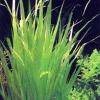 Blyxa aubertii
Blyxa aubertii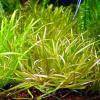 Blyxa japonica
Blyxa japonica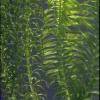 Egeria densa
Egeria densa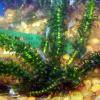 Elodea canadensis
Elodea canadensis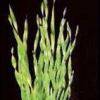 Vallisneria asiatica
Vallisneria asiatica Vallisneria gigantea
Vallisneria gigantea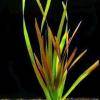 Vallisneria rubra
Vallisneria rubra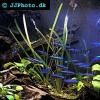 Vallisneria spiralis
Vallisneria spiralis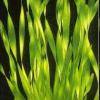 Vallisneria torta
Vallisneria torta